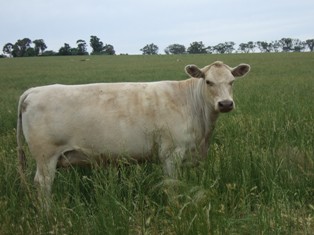As we head into spring, a few cases of cattle bloat have caused some problems in the region over the last week. Bloat is a seasonal problem in both dairy and beef cattle.
| The condition is usually precipitated by the rapid consumption of lush legume pasture species (especially clover and lucerne). Bloat is caused by an increase in the gas pressure within the rumen (paunch) as these feeds are fermented. The gas cannot be belched up normally and death results from the pressure causing heart and lung failure. The gas is often trapped in the form of a stable foam. Signs of bloat Cattle with bloat may display the following signs: no longer grazing; a reluctance to move; distended left abdomen; appear distressed — vocalise, eyes bulging; strain to urinate and defaecate; rapid breathing — mouth may be open with tongue protruding and staggering. The animal will go down in advanced cases. Death is rapid at this stage, and is due to the swollen rumen compressing the lungs, interfering with breathing and obstructing blood flow. |  |
Animal management
Bloat is often triggered by cattle gorging themselves with legume rich pasture or lucerne crop. Hungry cattle should not be allowed access to these areas.
Feeding out grass hay a few hours before the cattle are moved into a new paddock will reduce their appetite. Cattle will also selectively graze succulent grasses and legumes, which make assessing the risk of a pasture difficult, watch the animals carefully for the next 2 - 3 hours and remove them if any begin to bloat.
| Cattle will learn to moderate their pasture intake to control the extent of bloating and discomfort. This occurs over several weeks. Older cattle are better at adapting their grazing behaviour than younger animals. | "Bloat is often triggered by cattle gorging themselves with legume rich pasture or lucerne crop." |
Longer term treatment options will usually include using anti bloat products delivered in capsules, drenches, blocks, in the water supply or as hay treatments.
Each option has inherent limitations and costs and so a strategy should be developed in conjunction with you local private veterinarian who knows your particular situation. For further information please contact your local DPI Animal Health or Veterinary Officer.



